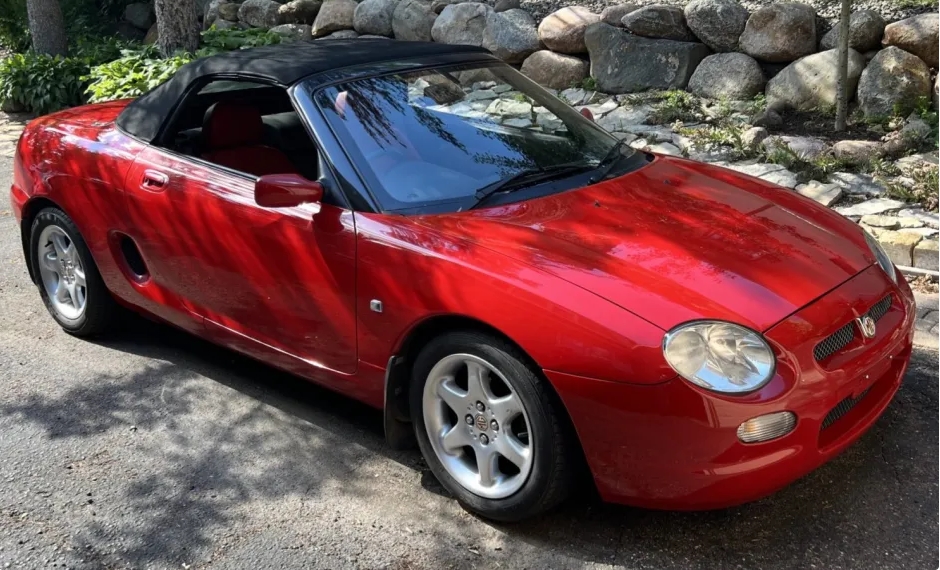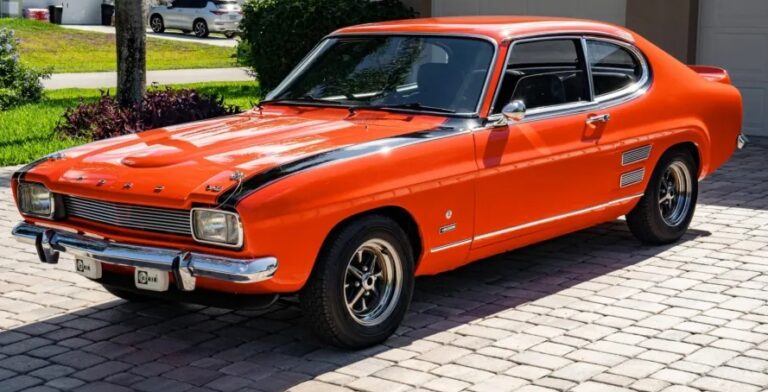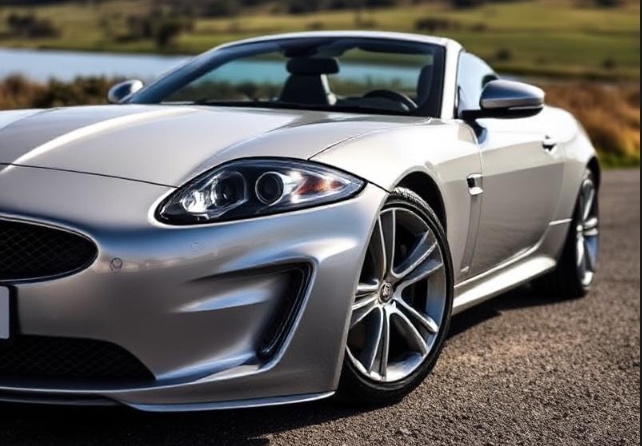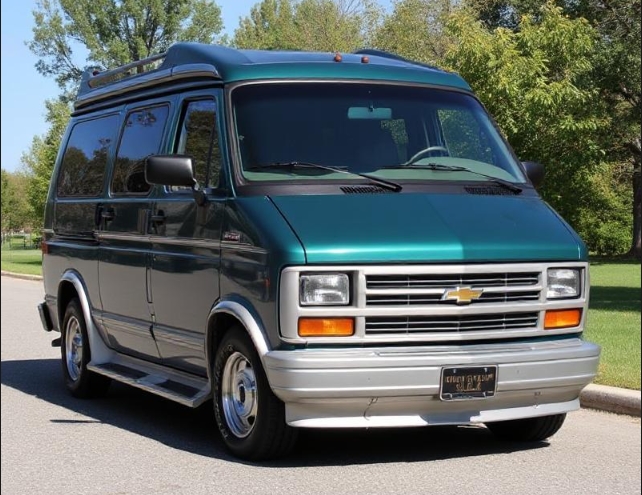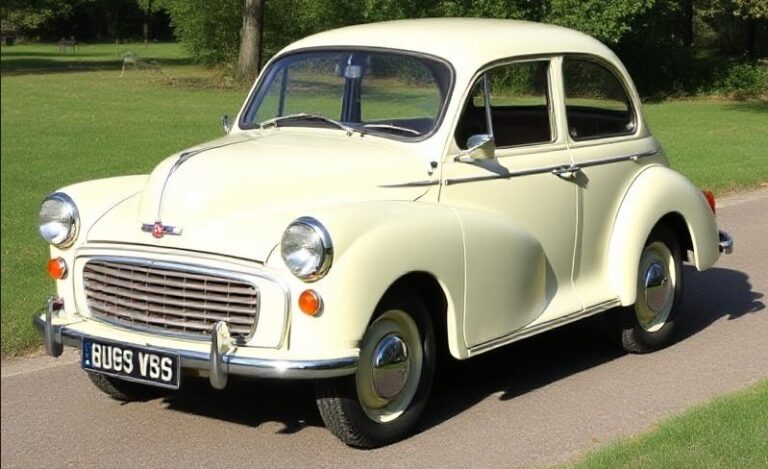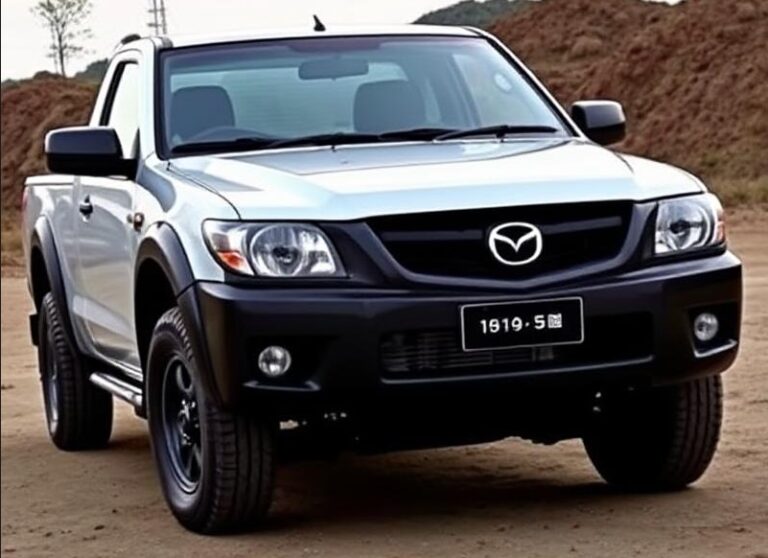The Phoenix Roadster: The Complete Evolution of the MG F
In the early 1990s, the affordable sports car market was dominated by a single, brilliant vehicle: the Mazda MX-5. It had single-handedly resurrected a segment that British manufacturers had once owned but had long since abandoned. The last MGB had rolled off the Abingdon production line in 1980, leaving a void in the hearts of enthusiasts. But within the sprawling, complex conglomerate of the Rover Group, a defiant spark remained. This spark, codenamed Project PR3, would ignite a fire, giving birth to the MG F – the first all-new MG sports car in over three decades and a triumphant, if ultimately tragic, return for the iconic octagonal badge.
The Genesis: A Bold New Direction (1995)
Launched to immense public and critical acclaim in the autumn of 1995, the MG F was a statement of intent. It eschewed the traditional front-engine, rear-wheel-drive layout perfected by its MGB ancestor and popularized by the MX-5. Instead, its designers and engineers, including the famed Gerry McGovern, opted for a more exotic and dynamically promising mid-engine, rear-wheel-drive configuration. This layout, typically the preserve of supercars, endowed the MG F with exceptional balance and handling agility.
Powering this new roadster was Rover’s technologically advanced, all-aluminum 1.8-litre K-Series engine. This lightweight, free-revving four-cylinder was the perfect heart for the new car. Another key innovation was its suspension. Instead of conventional steel springs, the MG F utilized the interconnected Hydragas system, a sophisticated fluid-based setup developed by Dr. Alex Moulton. This provided a remarkable blend of a supple, comfortable ride on rough surfaces and taut, controlled handling during spirited driving, a duality that few rivals could match.
The MG F was not just a car; it was a symbol of a resurgent British motor industry. Its arrival was a moment of national pride, and its evolution over the next decade would tell the story of a company fighting for its identity and survival.
Phase I: The Original MG F (1995-1999)
The initial production run established the core identity of the MG F. From its launch until its first major facelift in 1999, the range was relatively simple, focusing on delivering a pure, unfiltered driving experience.
MG F 1.8i (1995-1999): This was the launch model and the bedrock of the range. It featured the 1796cc K-Series engine producing a healthy 120 PS (118 bhp). This was enough to propel the lightweight roadster from 0-60 mph in a respectable 8.5 seconds. Standard equipment was modest by modern standards, but it had all the essentials: alloy wheels, an immobiliser, and a driver’s airbag.
MG F 1.8i VVC (1996-1999): Arriving shortly after the initial launch, the VVC was the high-performance variant that cemented the F’s sporting credentials. The “VVC” stood for Variable Valve Control, a clever Rover-developed system that optimised engine breathing across the rev range. This boosted power to an impressive 145 PS (143 bhp), dropping the 0-60 mph time to just 7.0 seconds. The VVC was distinguishable by its larger 16-inch alloy wheels (compared to the 1.8i’s 15-inch), half-leather seats, and standard electric power-assisted steering (EPAS), which was an option on the standard model. It was the enthusiast’s choice, offering a thrilling and responsive drive.
During this period, several special editions were released to maintain sales momentum, including the Abingdon (1998) in Brooklands Green with tan leather, and the 75 LE (1999) celebrating 75 years of MG, which came in a unique Mulberry Red or Black with red leather and chrome accents.
Phase II: The Mark II Refresh (1999-2002)
In late 1999, MG introduced a revised version of the F, often referred to by enthusiasts as the “Mark II.” The changes were evolutionary rather than revolutionary, aimed at refining the car’s aesthetics and broadening its appeal.
Externally, the updates were subtle. New alloy wheel designs were introduced across the range, and the indicator lenses changed from amber to clear for a more modern look. The most significant changes were found inside. The cabin received a welcome update with a new centre console, revised switchgear, and a more modern instrument cluster. Overall fit and finish were improved, addressing some of the early criticisms of interior quality.
The model range also expanded, making the MG F more accessible and versatile.
MG F 1.6i (2001-2002): Introduced later in the MkII’s life, this was a new entry-level model designed to lower the price of entry. It used a 1588cc version of the K-Series, producing 112 PS (110 bhp). While not as fast as its 1.8-litre siblings, it retained the F’s superb handling and was an excellent value proposition.
MG F 1.8i (1999-2002): The standard 120 PS model continued, benefiting from all the interior and exterior upgrades of the MkII facelift.
MG F 1.8i Steptronic (2000-2002): In a bid to attract new customers, MG introduced an automatic gearbox option. This was a sophisticated six-speed CVT (Continuously Variable Transmission) with a sequential “Steptronic” manual mode, allowing drivers to shift gears using buttons on the steering wheel. It was only available with the 120 PS engine.
MG F 1.8i VVC (1999-2002): The 145 PS flagship model also continued, receiving the same package of MkII updates.
MG F Trophy 160 (2001-2002): This was the ultimate evolution of the MG F platform and a true road-and-track weapon. Engine tuners at MG Rover squeezed an incredible 160 PS (158 bhp) from the VVC engine. But the changes ran much deeper. The groundbreaking Hydragas suspension was significantly modified with the addition of Eibach springs and Bilstein dampers, lowering the ride height and providing a much firmer, more focused handling character. Braking was massively upgraded with large, red AP Racing four-piston calipers clamping down on bigger discs. Visually, the Trophy was distinguished by its aggressive front bib spoiler, a boot-mounted rear spoiler, unique 16-inch multi-spoke alloy wheels, and a purposeful, track-ready stance. It was a final, defiant roar for the original “F” nameplate.
Phase III: The Transformation to MG TF (2002-2005)
By 2002, the MG Rover Group decided a more substantial overhaul was needed. The costly and complex Hydragas system was becoming obsolete, and the car’s rounded styling was beginning to look dated against sharper-edged rivals. The result was the MG TF. While based on the same core bodyshell, the changes were significant enough to warrant a new name.
The most profound change was the complete replacement of the Hydragas suspension with a conventional setup of coil springs and dampers. This, combined with a 20% increase in torsional body stiffness, gave the TF a much sharper, more direct handling feel. The downside was a considerably firmer, less forgiving ride, losing the magical duality of the original F.
The styling was also comprehensively updated. A new, angular front bumper with integrated fog lamps and sharper, projector-style headlamps gave the car a more aggressive face. The side air intakes were redesigned, and the boot lid was reshaped to incorporate a small, integrated spoiler.
The engine lineup was rationalized and re-badged to reflect their power output in PS:
TF 115: The entry-level model, using the 1.6-litre K-Series engine (now rated at 116 PS).
TF 135: Replacing the old 1.8i, this model featured a tuned version of the standard 1.8-litre engine, now producing 136 PS (134 bhp), offering a significant performance boost over its predecessor.
TF 120 Steptronic: The CVT automatic model continued, using a 120 PS version of the 1.8-litre engine.
TF 160: The range-topper carried over the superb 160 PS engine and uprated brakes from the Trophy 160, making it the definitive performance version of the TF.
This lineup remained largely unchanged until April 2005, when the MG Rover Group collapsed into administration, and production at the Longbridge factory shuddered to a halt. For two years, it seemed the story of the British roadster was over for good.
The Afterlife: A Brief Chinese Revival (2007-2011)
After the assets of MG Rover were purchased by the Chinese automaker Nanjing Automobile Corporation (NAC), an ambitious plan was hatched to restart production of the TF at Longbridge. In 2007, the first new TF, a limited-edition LE500 model, rolled off the line. This model featured several minor upgrades, including a new grille mesh, some interior trim revisions, and a glass rear screen in the soft top.
Following the LE500, NAC (by then merged with SAIC Motor) offered two main models:
TF 135: The standard production model, using the familiar 1.8-litre, 136 PS K-Series engine.
TF 85th Anniversary (2009): A special edition featuring unique duo-tone leather seats and special badging.
Despite the effort, the revived TF struggled. The design was now well over a decade old, the market had moved on, and sales were painfully slow. In March 2011, production quietly ceased for the final time, bringing the remarkable 16-year story of the MG F and TF to a close.
.

.
Legacy
The evolution of the MG F is a tale of innovation, ambition, and adversity. It began as a world-beating roadster that bravely challenged the established order with its mid-engine layout and advanced suspension. Through its life, it was refined, sharpened, and honed into a potent performance car in Trophy 160 and TF 160 guise. It survived a change of ownership, a complete suspension redesign, and even the collapse of its parent company.
Today, the MG F and TF are celebrated by a passionate enthusiast community. They represent the last of a breed: the final mass-produced, affordable, British-built two-seater sports car. From the supple ride of the original 1.8i to the raw aggression of the Trophy, its journey was a testament to the enduring spirit of the MG badge – a phoenix that truly did rise from the ashes.
